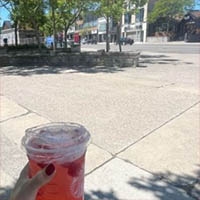Indigenous peoples in Canada
 CREDIT: LAUREN DIETRICH
CREDIT: LAUREN DIETRICHIndigenous peoples, also known as Aboriginal peoples, are the original peoples of North America. The Canadian Constitution recognizes three groups of Indigenous peoples in Canada including the First Nations, Métis and Inuit. According to the Government of Canada website, in 2016 there were 1.67 million people who identified as an Indigenous person and this group has the fastest growing and youngest population in Canada. The Government of Canada website also states that the Indigenous population grew by 42.5 per cent between 2006 and 2016 and 44 per cent are under the age of 25. Indigenous peoples are an integral part of Canada and it is important that people understand their cultures and the differences between First Nations, Métis and Inuit.
First Nations
According to the Government of Canada website, there are more than 617 First Nation communities in Canada and 133 of those communities are located in Ontario. Some of the First Nations communities in Ontario include Saugeen, Mohawk, Algonquin and Chippewa. While several First Nations people live within these small communities, Indigenous Canada found that 65 percent of the 220,000 First Nations people in Ontario live in urban areas. Each Nation has a unique culture, beliefs and traditions and there are a number of different languages spoken across the First Nations groups.
Metis
According to firstpeoplesofcanada.com, there are approximately 400,000 Métis peoples in Canada. The first Métis communities in Canada were located in the Red River area of Manitoba and then moved into Saskatchewan and Alberta. They are now also located in Ontario, British Columbia, Quebec and the Northwest Territories. The Métis nation was formed with aspects of French-Canadian and Native Canadian cultures and comprised of people born to First Nations women and European men during the fur trade.
Inuit
Inuit peoples are Aboriginal peoples who mainly inhabit Northern Canada. According to the Canadian Encyclopedia website, 73 per cent of Inuit people in 2011 were located in in the homeland called Inuit Nunangat. Inuit Nunangat mainly includes Nunavut, northern Quebec, northern Labrador, Northwest Territories and Yukon. The Indigenous Canada website states that a number of Inuit people migrate to southern Ontario to gain education and employment and there are currently more than 3000 Inuit peoples located in the major urban regions of Ontario. Statistics Canada found that approximately 4.2 percent of Aboriginal people are Inuit and make up a population of 59,440 people in Canada. There are eight main Inuit groups and five variations of the Inuit language.
Indian Status
People in Canada who are status Indians can register for Indian status under the Indian Act. This is a legal status where registered Indians can be eligible for a number of benefits and rights from the federal, provincial and territorial governments. In general you can be eligible for Indian status if one or both of your parents are registered. To find out more visit the Government of Canada website at canada.ca or the Government of Ontario website at ontario.ca.
First Nations Centre at Fanshawe
The First Nations Centre at Fanshawe supports First Nations, Métis and Inuit students with their academics, social life, culture and activities on campus. There are a number of scholarships, bursaries and awards that Indigenous students are eligible to apply for including the Aboriginal Postsecondary Education and Training Bursary, First Nations Centre Student of the Year Award, Métis Nation of Ontario Bursary (OSOTF) and more. Fanshawe also offers an Indigenous Women course as a general elective and a one year certificate or two year diploma in First Nations studies. The First Nations Centre is located in room A1047 and you can contact them by phone at 519-452-4430 x4619.














